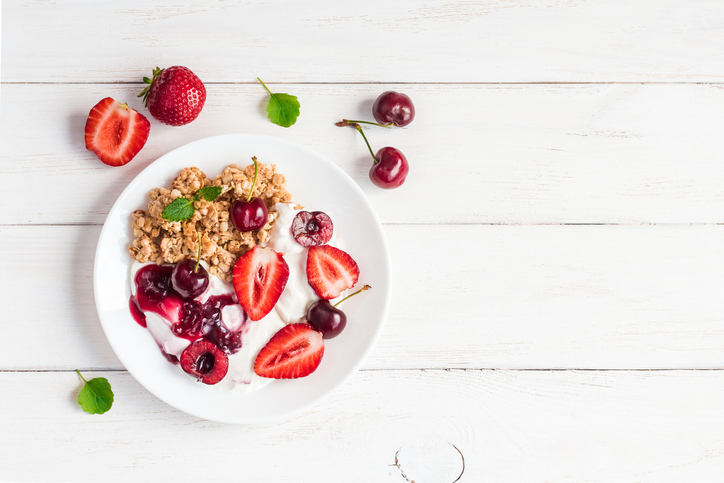By Isabelle Huot
When your appetite decreases—which can happen as you get older—three meals a day won’t always meet your daily nutritional needs. In that case, a snack or two can help while spreading your dietary intake out over the course of day. This is also a healthy way to up your consumption of fruits, vegetables, and dairy products or dairy alternatives, which may be missing or underrepresented in your main meals. A nutritious snack usually combines a carb source with a protein source. Carbs provide quick energy, while protein sustains you over a longer period of time.
Sources of carbs
These include fibre-rich whole grains, which can help regulate bowel function, lower cholesterol, and better control blood-glucose levels.
Sources of protein
Good choices are low-fat dairy products and lean or plant proteins, such as nuts, seeds, and legumes. Dairy products are good sources of both protein and calcium, and they’re sometimes fortified with vitamin D, a vitamin that helps with the absorption of calcium. Adequate intake of calcium and vitamin D helps to maintain strong bones by reducing the loss of bone density, thereby reducing the risk for fractures.
For people who are lactose intolerant, have a milk allergy, or don’t consume dairy products, there are alternatives that are high in protein and calcium, such as lactose-free dairy products, fortified soy beverages, almonds, white beans, sardines, salmon, and tofu made with calcium sulphate.
Finally, snacks should be made with fresh, nutritious foods that are not processed or only lightly processed. Ultra-processed foods often contain a lot of saturated fat, refined sugar, and sodium: it’s best to limit your intake of these.






